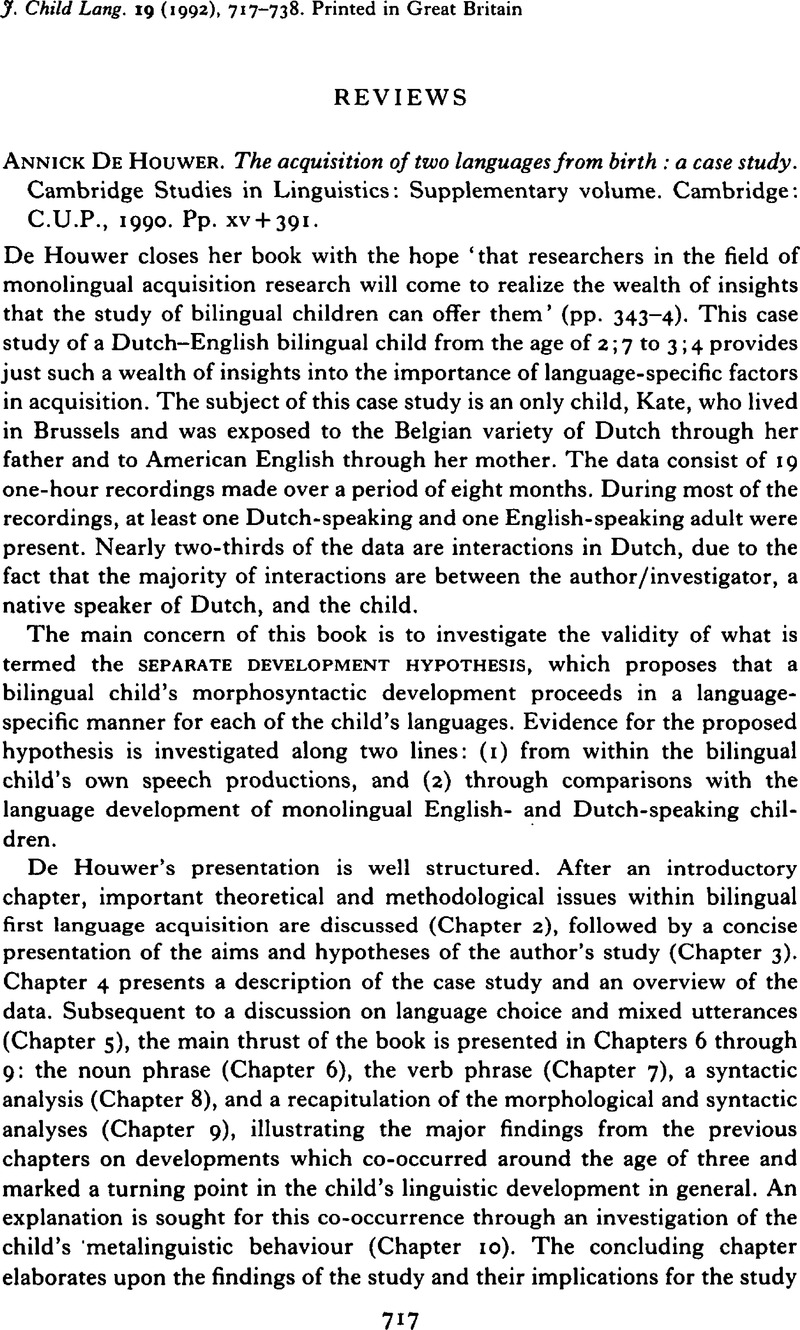No CrossRef data available.
Article contents
Annick De Houwer. The acquisition of two languages from birth: a case study. Cambridge Studies in Linguistics: Supplementary volume. Cambridge: C.U.P., 1990. Pp. XV + 391.
Published online by Cambridge University Press: 17 February 2009
Abstract
An abstract is not available for this content so a preview has been provided. Please use the Get access link above for information on how to access this content.

- Type
- Reviews
- Information
- Copyright
- Copyright © Cambridge University Press 1992
References
REFERENCES
Bergman, C. (1976). Interference vs. independent development in infant bilingualism. In Keller, G., Teschner, R. & Viera, S. (eds), Bilingualism in the bicentennial and beyond. New York: Bilingual Press/Editorial Bilingüe.Google Scholar
Genesee, F. (1989). Early bilingual development: one language or two? Journal of Child Language 6, 161–79.CrossRefGoogle Scholar
Redlinger, W. & Park, T. (1980). Language mixing in young bilingual children. Journal of Child Language 7, 337–52.CrossRefGoogle Scholar
Taeschner, T. (1983). The sun is feminine. A study on language acquisition in bilingual children. Berlin: Springer-Verlag.Google Scholar
Vihman, M. (1982). The acquisition of morphology by a bilingual child: a whole-word approach. Applied Psycholinguistics 3, 141–60.CrossRefGoogle Scholar
Vihman, M. (1985). Language differentiation by the bilingual infant. Journal of Child Language 12, 297–324.Google Scholar




